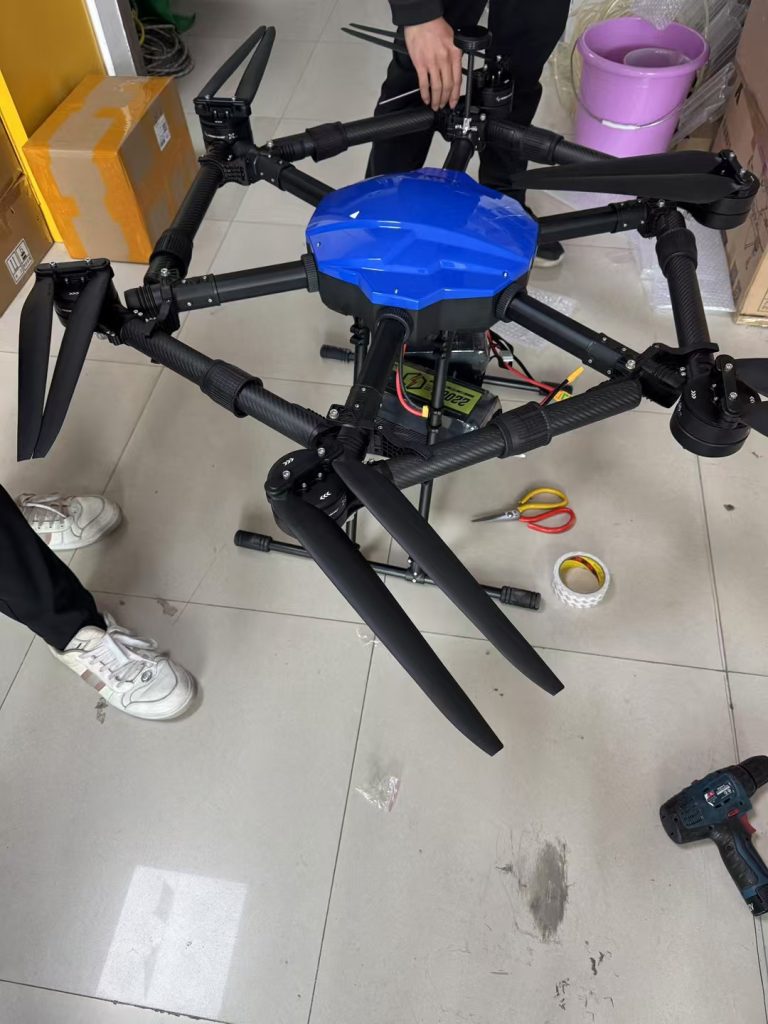
The global agricultural sector faces mounting pressure to boost productivity while reducing costs and environmental harm. Drone spraying has emerged as a transformative solution, offering farmers a cost-effective, precise, and eco-friendly alternative to traditional methods. This article dives into how agricultural drones are revolutionizing crop protection and fertilization, with a focus on maximizing efficiency and profitability.
- The Rising Demand for Drone Spraying in Agriculture
Farmers worldwide are adopting drone technology to address challenges like labor shortages, rising input costs, and regulatory demands for reduced chemical use. Key drivers include:
- Precision Farming: Drones equipped with multispectral cameras and AI-driven nozzles target specific areas needing treatment, minimizing chemical waste by up to 50%.
- Time Savings: Covering 100 acres in 30 minutes vs. 8+ hours with tractors or manual labor.
- Cost Efficiency: Eliminates fuel, vehicle maintenance, and high labor expenses, slashing operational budgets by 30–60%.
- Design Features That Define Cost-Effective Drone Systems
Not all drones are created equal. For optimal ROI, prioritize models with:
- Heavy-Duty Payloads: Drones carrying 10–30 liters per flight reduce refilling frequency.
- Extended Flight Times: Batteries or hybrid systems lasting 25+ minutes enhance coverage rates.
- Adaptive Spraying Technology: Sensors adjust spray density based on crop height, wind speed, and terrain.
- Easy Maintenance: Modular components simplify repairs, lowering long-term downtime.
- Environmental and Financial Advantages
Reduced Chemical Runoff: Drones apply chemicals directly to plant surfaces, preventing groundwater contamination.
Lower Carbon Footprint: Electric drones produce zero emissions compared to diesel-powered machinery.
Scalability: Ideal for small farms to large-scale operations, with per-acre costs up to 70% lower than traditional methods.
- Maximizing Profitability: Pro Tips for Farmers
- Pre-Flight Planning: Use GIS mapping tools to design efficient flight paths and avoid overlapping sprays.
- Routine Calibration: Weekly nozzle checks and battery health monitoring ensure consistent performance.
- Operator Training: Certified pilots reduce accidents and optimize chemical application accuracy.
- Emerging Innovations Shaping the Industry
- Swarm Technology: Coordinated fleets of drones working in sync to treat vast fields in hours.
- IoT Integration: Real-time soil and weather data integration allows dynamic spraying adjustments.
- Solar-Powered Drones: Extended operational ranges for remote or large-acreage farms.
- Overcoming Common Challenges
- Regulatory Compliance: Stay updated on local UAV regulations, including altitude restrictions and no-fly zones.
- Initial Costs: Leasing options or government subsidies can offset upfront investments.
- Crop-Specific Adjustments: Tailor nozzle settings and flight heights for crops like rice, orchards, or vineyards.
The Bottom Line
For agricultural businesses prioritizing sustainability and profitability, drone spraying is no longer a luxury—it’s a necessity. By integrating this technology, farms can achieve higher yields, reduce chemical dependency, and future-proof operations against rising costs. As innovation continues to drive down prices and improve functionality, drone spraying is set to become a cornerstone of precision agricultur












暂无评论内容